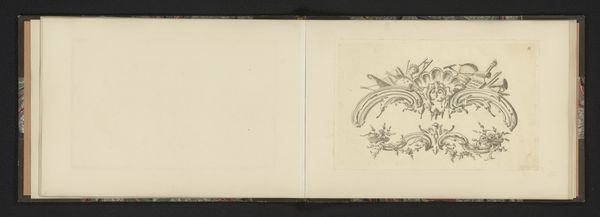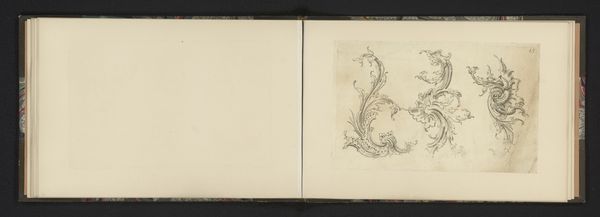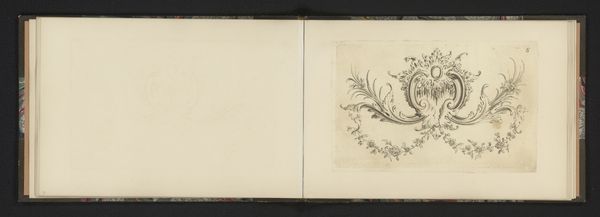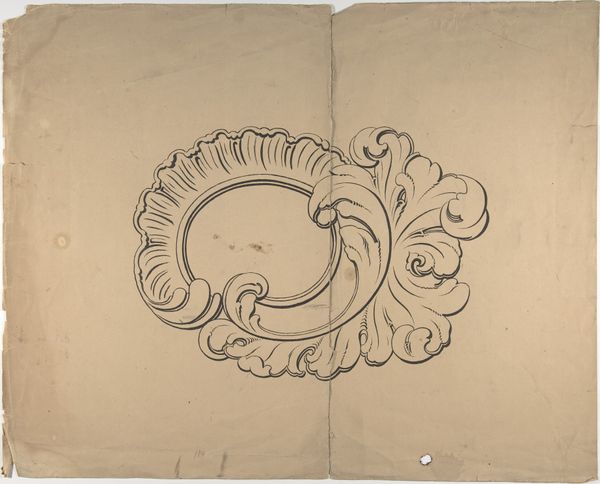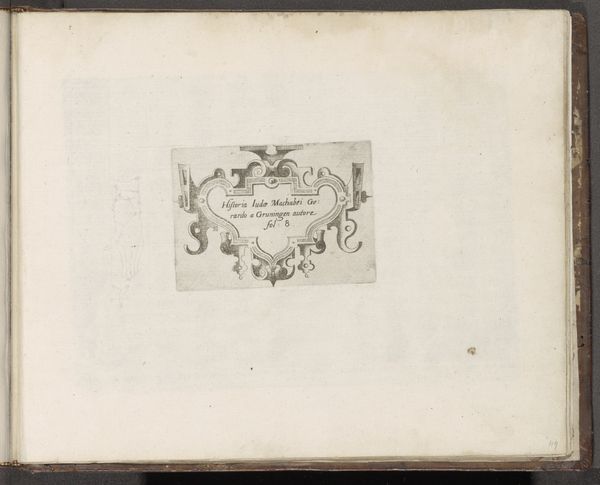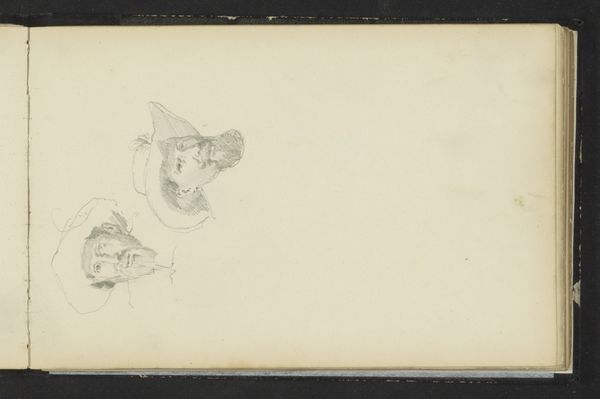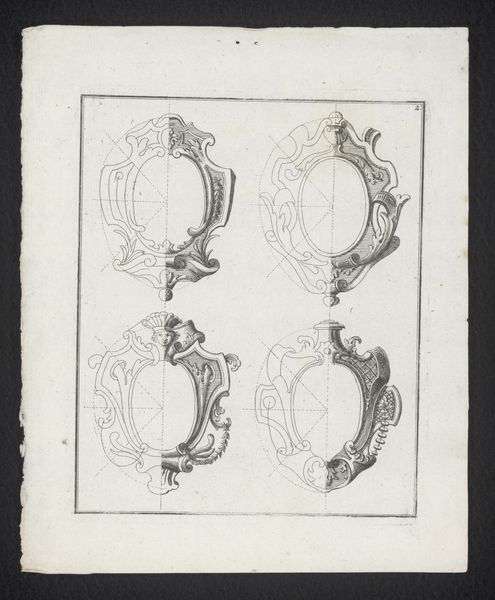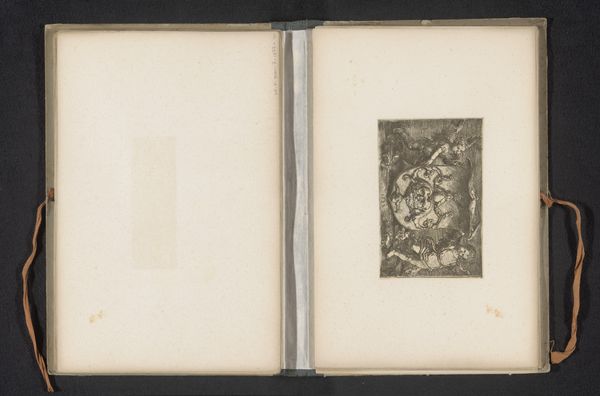
Dimensions: height 131 mm, width 209 mm
Copyright: Rijks Museum: Open Domain
Curator: Here we have "Ornamentele versiering van bladeren," or "Ornamental Decoration of Leaves," a pen and ink drawing created in 1766 by P. Baretti. Editor: My immediate impression is one of meticulous grace. The swirling forms seem poised, as if choreographed to some unseen music. Curator: These sketches are a wonderful example of the Baroque fascination with natural forms, meticulously rendered as ornamentation. Consider how pattern books and design manuals circulated during this period. They essentially democratized access to visual vocabulary, and standardized an entire aesthetic. Editor: I'm struck by the absence here. Baretti leaves the adjacent page blank, so creating a dialogue between presence and absence; something like "negative space." How do these ornamented gestures function within the broader narratives of 18th-century print culture and aesthetics? The Baroque as this visual language accessible across class and national lines… interesting indeed. Curator: Well, that availability was of course quite limited. While Baroque styles adorned churches and palaces, thereby becoming associated with absolute power, their reproductions still catered to specific elites. Editor: Perhaps but still its about a diffusion, an echo, I am also fascinated by this suggestion of movement. In the age of exploration, travel, and enlightenment, a new dynamism seems almost mandatory. The leaves stretch, spiral, almost taking flight, symbolizing this era. Also: who owned Baretti’s book? What were the circulation strategies in those days? Curator: Considering it’s a study of ornaments in pen and ink, it’s about as dynamic as one could get in 1766. I also wonder what effect such elaborate embellishments may have had in influencing political messaging and ideologies via architecture and propaganda posters for a world hungry for information, power, and progress. Editor: Absolutely! The political dimension. And for me this piece ultimately serves as a powerful reminder to constantly re-examine history's familiar aesthetics under new lenses. Curator: Agreed, it underscores that designs have their own political narratives.
Comments
No comments
Be the first to comment and join the conversation on the ultimate creative platform.
